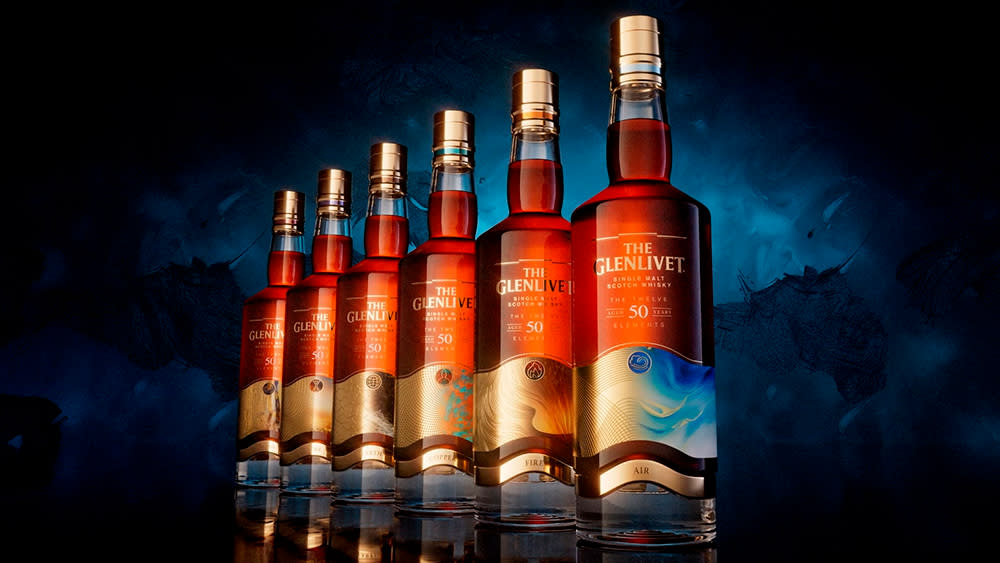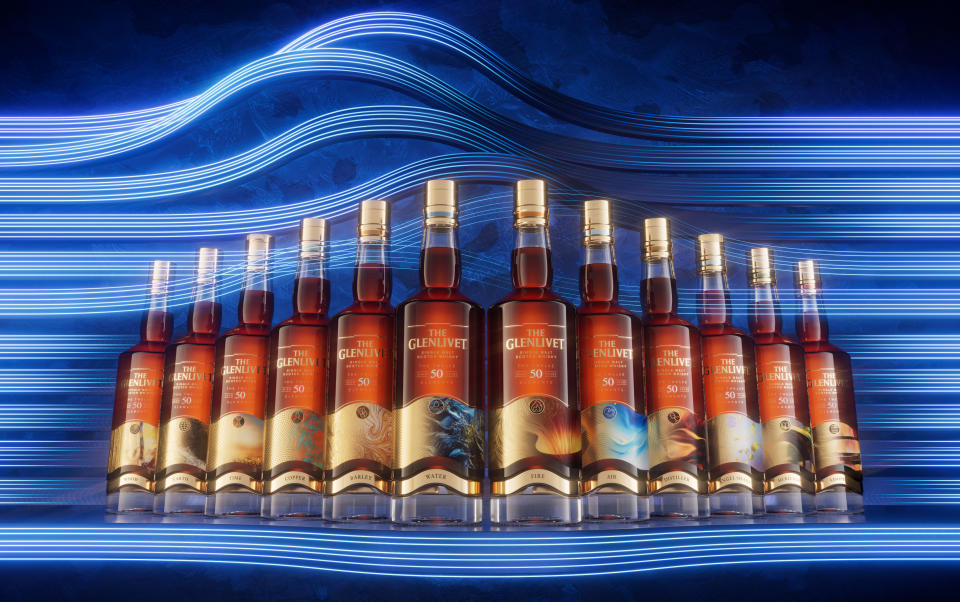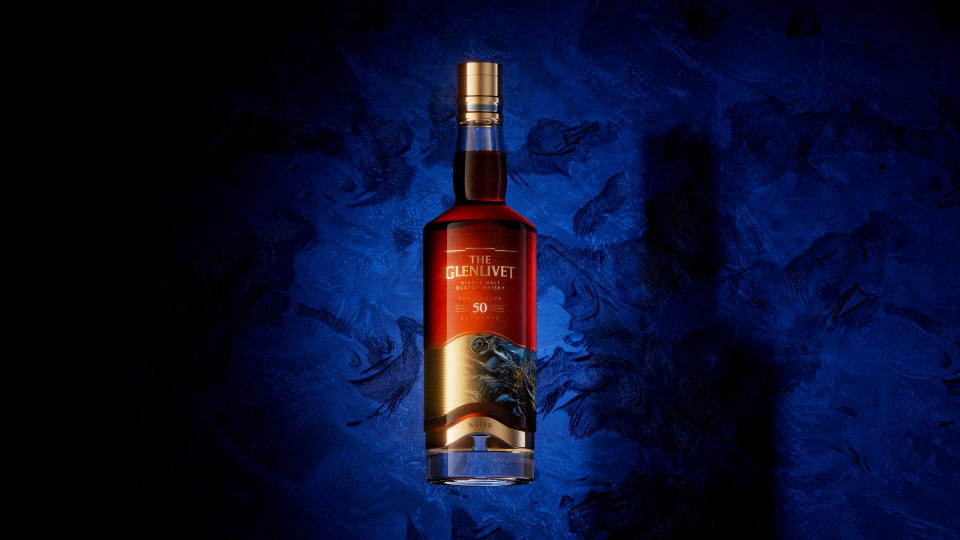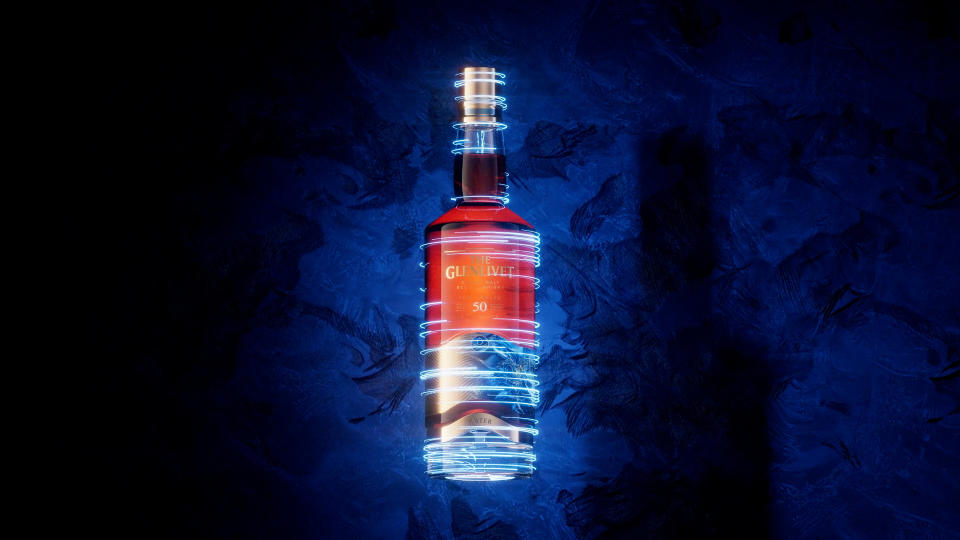This whisky maker's AI packaging design feels weirdly off-brand

How does the oldest legal distillery in Scotland show it's still relevant in the year 2024? And how does it demonstrate that its ultra rare 50-year-old whisky is worth the €40,000-per-bottle price tag? By putting AI art on its packaging design, apparently.
From Xbox to Marvel, we've seen plenty of examples in recent months of brands getting caught out and lambasted for using dodgy AI artwork. But Glenlivet is (so far) a rare example of a luxury name actually highlighting the use of AI as if it were a selling point that adds value to its product (see our pick of the best AI image generators if you want to make your own).

Even the biggest names have to move with the times, but AI art feels curiously off-brand for a distillery that has been producing single malts since 1824. It might now belong to Chivas, a subsidiary of France's Pernod Ricard, but, like many high-end brands, The Glenlivet still prides itself on traditional values and craftsmanship.
Luxury brands often set themselves apart by emphasising the painstaking artisan human work behind their product. The entire branding system down to packaging design can help communicate this, and in times where cheap AI art is everywhere, it can represent even more of a premium.
But for the launch of ultra-rare whisky collection The Twelve Elements, The Glenlivet is making a "nod to its future". That takes the form of AI-generated artwork for each of the 12 bottles that will be released via a blockchain-enabled marketplace where customers can also store and resell their purchases. Each artwork represents an element involved in the whisky-making process, from 'fire' and 'water' to 'copper' and 'heritage'.

The Glenlivet's spokesperson said: "From the spiritual to the scientific, these elements are fundamental to The Glenlivet’s heritage and its ongoing pursuit of bravery, boldness, and innovation, resulting in a uniquely distinct whisky that surpasses the sum of its parts. As a brand known for its originality and bold ethos, the digital world is a natural next step for The Glenlivet – and creating distinct visual identities through AI was an exciting way to continue pushing boundaries in whisky.”
But is AI-generated imagery really the 'perfect fit' for a rare collection of whisky that's been maturing at the Speyside distillery since 1974? It feels so cheap, disposable and replaceable compared to the option of commissioning an artist to create bespoke work. The idea is to highlight the innovativeness of the new blockchain marketplace, but is AI art the way to communicate 'innovation' merely because it's relatively new?

The brand's PR says the artwork for the packaging designs was created using Deep Dream Generator, an online text-to-image generator run by a Bulgarian company called Aifnet (not to be confused with Google's DeepDream project) and overseen by The Glenlivet's design team.
It's an interesting attempt to modernise the sometimes stuffy world of whisky, but the accompanying graphics feel more like something that would fit a vodka, or even an alcopop. It seems the Glenlivet is aiming at the kind of customer that bought Tesla tequila and thought the NFTs they bought in 2022 would be worth millions today.
If you do want to make an investment, the bottles are on sale for €40,000 (£34,000) a piece plus VAT via the Glenlivet Whisky Exchange cabinet. The whisky will be bottled in July to mark The Glenlivet's 200th anniversary.

